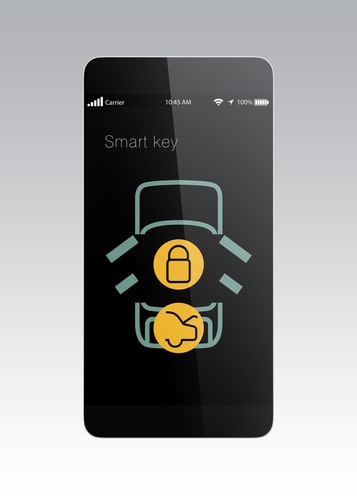Do you use Tile or other Bluetooth tracking devices? If so, you know that such devices, attached to your car keys or wallet, created a small stir. A way to track down something you can’t find. Very neat but hardly revolutionary. One of those consumer tchotchkes as likely to be handed out as trade-show swag as purchased.
So why did Apple recently announce AirTags, a seemingly similar application? They’re not known for investing in low-value products. AirTags use UWB – ultra-wide band) – communication in addition to Bluetooth (BT). AirTags are just a first application of that technology, now embedded in new Apple and Samsung phones and others racing to catch up. For an application much more significant than finding lost possessions: secure keyless entry. Keyless entry is another BT capability but is vulnerable to man-in-the-middle attacks. UWB is much more secure. UWB is very precise on location thanks to its pulse-based communication supporting time of flight measurement down to centimeters. A hacker can’t just be nearby; they also need to align with the same precision.

So what?
If you don’t think this is a big deal, checkout bluesnarfing and eavesdropping for BT. Well known vulnerabilities for which the current recommended defenses are to turn off BT when not in use (how many of us do that?) or rely on other defenses (how current are you on those?). The BT SIG is working to improve security but it’s not there yet.
BT is still irreplaceable in many respects but clearly a more secure solution is needed, which is why UWB is attracting a lot of attention. This is hardware-based and installed in the latest releases of the dominant cell phones, so it has a firm grip on a very high-volume market. But it’s a curious grip. UWB is much more secure, but BLE (Bluetooth low energy) is much lower power. Practical solutions need to use both – BLE at a distance greater than ~10m and UWB as you approach the lock. The FIRa Consortium responsible for UWB admit as much, saying the two standards work best cooperatively.
Beyond secure keyless entry
Secure door locks for our houses, cars, businesses, are critical applications, but is that all? Think about the centimeter-level accuracy that UWB can provide. Some companies are building infrastructure to support real-time location services (RTLS), to be used on a factory floor to track assets and personnel.
A more immediate application for most of us is secure mobile payment. Wait – am I saying current methods aren’t secure? Current proximity-based methods use NFC, also vulnerable to eavesdropping. But UWB-based mobile payments will be much more secure. NXP demonstrated such a system together with NTT Docomo and Sony in Japan, supporting cashless, barrier-free parking and contactless payment in a store or drive-through. I’m guessing that’s the bigger prize the phone makers have in mind.
A platform to support both
Short(ish) range, low power and high security will demand support for both BLE and UWB. This is a real strength for CEVA. They’ve been the leading IP (hardware and software) provider for embedded communication solutions now for many years – Bluetooth, Wi-Fi, cellular and GPS/GNSS. They have recently added support for UWB. So you can get that collaborative solution from one supplier. Nice.
Also Read:
Low Power Positioning for Logistics – Ultimate Tracking
Spot-On Dead Reckoning for Indoor Autonomous Robots
IP and Software Speeds up TWS Earbud SoC Development
Share this post via:





Comments
One Reply to “Ultra-Wide Band Finds New Relevance”
You must register or log in to view/post comments.